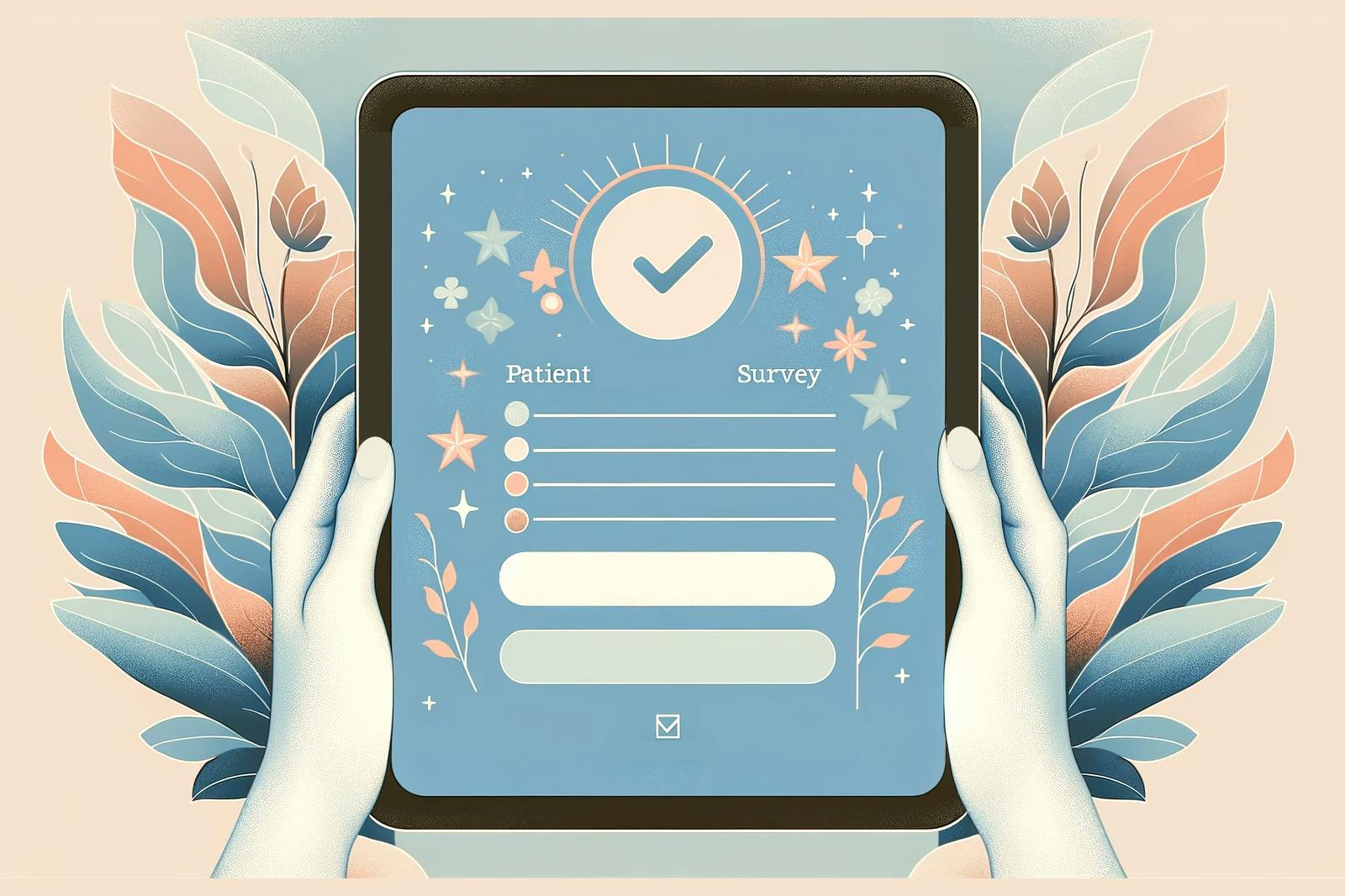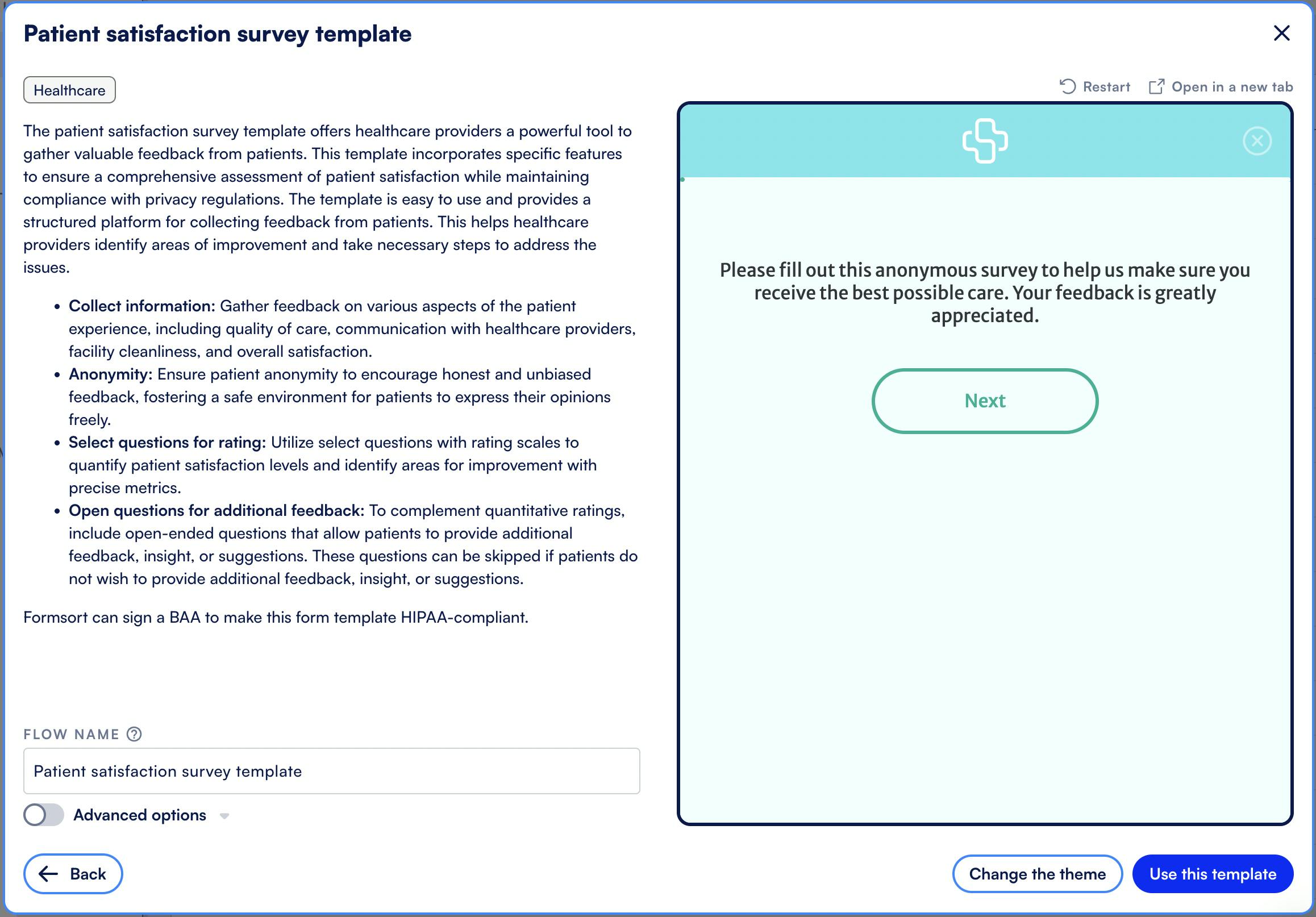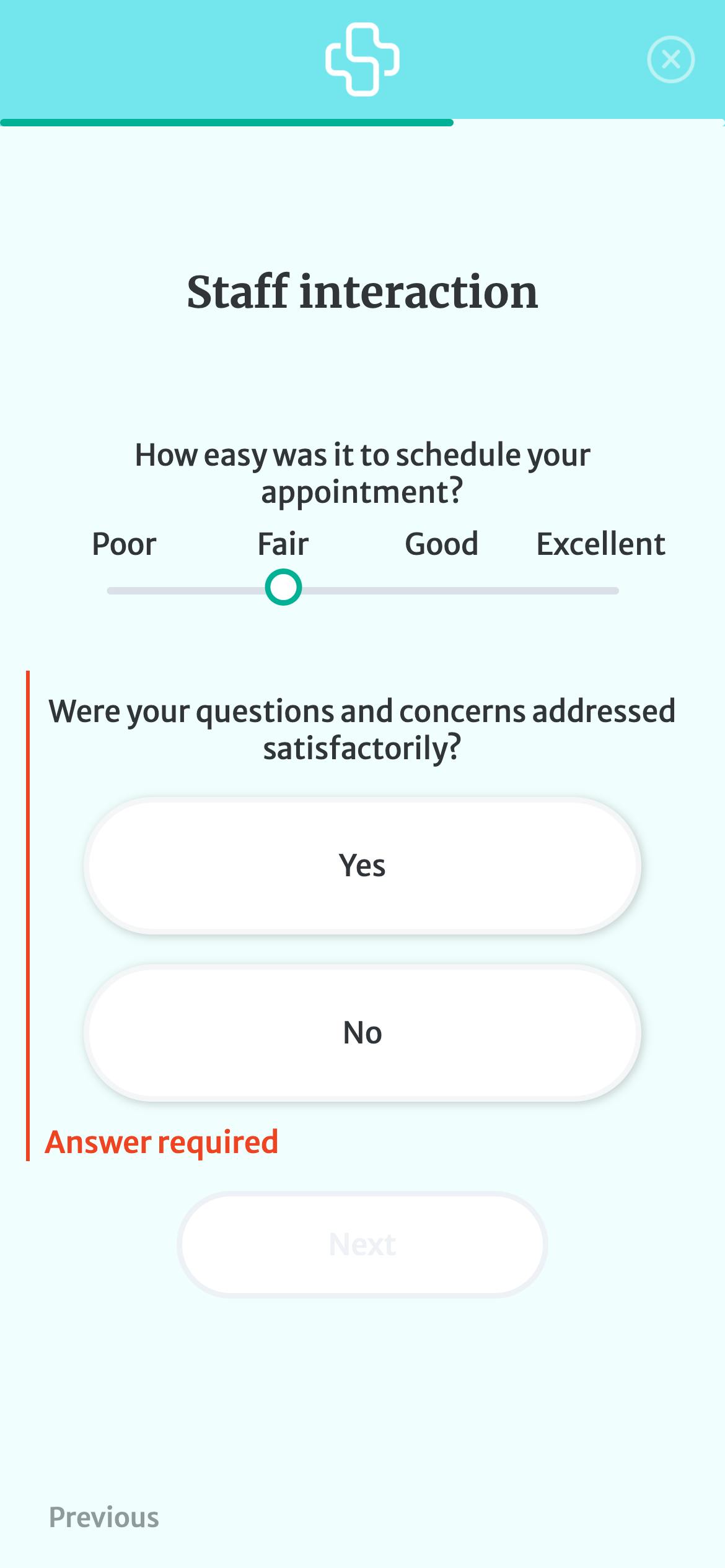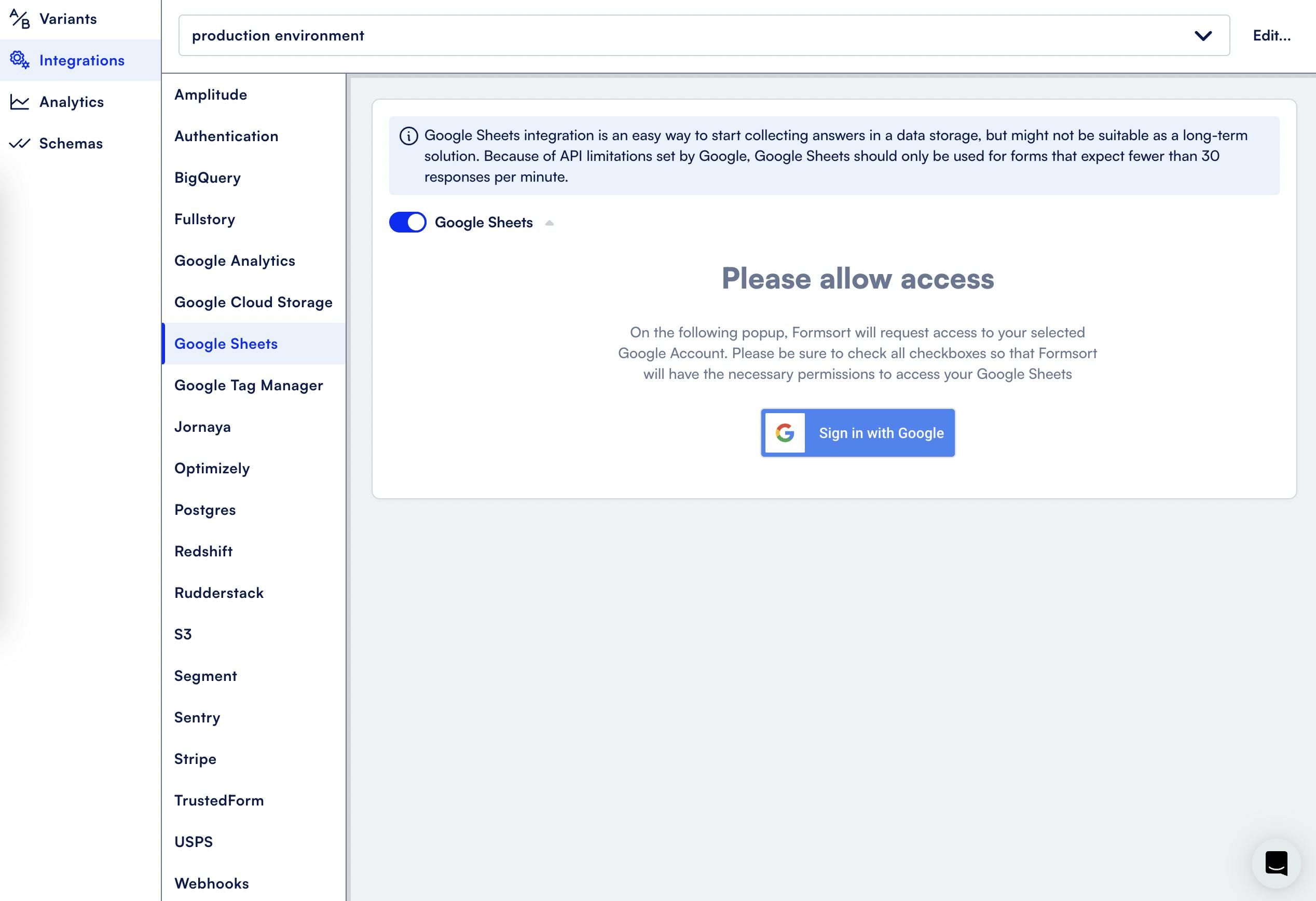How to create a patient satisfaction survey form

Leverage patient feedback to improve service
Whether you’re a healthcare startup or an established institution, patient feedback plays an integral part in shaping and growing your business. Getting insights directly from patients can provide guidance for enhancing the quality and effectiveness of your services. Patient satisfaction surveys are a valuable tool for organized feedback, helping identify strengths and areas for improvement.
In this article, we’ll discuss the advantages of using patient satisfaction surveys and provide a step-by-step guide to create your own, including key questions that will yield valuable data. We’ll also explore strategies to help ensure high completion rates.
What is a patient satisfaction survey?
A patient satisfaction survey is a structured questionnaire administered to individuals who’ve used healthcare services. Its primary purpose is to gather feedback on various aspects of the patient experience, including the quality of care, staff interactions, and facility environment. These surveys help assess patients' perceptions, preferences, and levels of satisfaction with the care they have received.
Directly collecting feedback from patients lets healthcare providers identify areas for improvement, measure patient satisfaction levels, and drive continuous quality improvement efforts. They also foster communication and trust between patients and providers.
Overcoming barriers to patient feedback
With completion rates around 50%, it’s notoriously difficult to get high levels of submission for feedback surveys (source). Although patient feedback surveys are valuable, patients often don’t fill them out for various reasons. One common barrier is the perceived lack of importance or impact of the survey, leading patients to question whether their feedback will truly make a difference. Time constraints and survey fatigue also contribute to low completion rates, as patients may feel overwhelmed by the number of surveys they receive and prioritize other tasks over providing feedback. Technical barriers, such as limited access to internet-enabled devices or discomfort with technology, can also hinder participation. Finally, privacy concerns regarding the confidentiality of survey responses may deter patients from sharing their feedback.
To address these issues, you can:
- Enhance the perceived importance of surveys by communicating how patient feedback directly informs improvements in care quality.
- Offer incentives such as discounts or entry into prize drawings
- Simplify survey formats and ensure accessibility across different devices to mitigate time constraints and frustration
- Actively solicit feedback at key touchpoints in the patient journey and follow up with reminders to help maintain engagement and increase survey completion rates.
- Ensure transparency and implement robust data security measures to alleviate privacy concerns and build trust with patients regarding the confidentiality of their responses.
The benefits of conducting a patient satisfaction survey
There are many advantages to leveraging patient satisfaction surveys within healthcare organizations, including:
- Enhancing patient care: By soliciting feedback directly from patients, you can gain valuable insights into the effectiveness of their care delivery processes and make targeted improvements to enhance patient outcomes and experiences.
- Improving patient outcomes: Like patient eligibility forms and medical history forms, patient satisfaction surveys help you identify areas where improvements are needed to optimize clinical outcomes, reduce adverse events, and enhance patient safety.
- Increasing patient retention and loyalty: By demonstrating a commitment to listening to patient feedback and making improvements based on their input, you foster patient loyalty, satisfaction, and retention.
- Benchmarking and quality improvement: Patient satisfaction surveys serve as valuable tools for benchmarking performance, identifying areas of excellence and areas needing improvement, and implementing targeted quality improvement initiatives.
- Identifying training needs: By analyzing patient feedback, you can identify areas where staff training and development are needed to enhance communication, professionalism, and patient-centered care delivery.
How to create a patient satisfaction survey
Designing and implementing a patient satisfaction survey involves several key steps to ensure effectiveness and ease of use for patients:
Step 1: Define your objectives
Clearly outline the objectives of the survey, including the specific aspects of the patient experience to be assessed and the goals of gathering feedback. Determine whether the survey aims to evaluate overall satisfaction, assess specific aspects of care (such as wait times or staff interactions), or gather insights for targeted improvement initiatives. This clarity ensures that the survey questions are focused and aligned with your goals.
Step 2: Design the survey
Develop clear, concise questions that address your identified objectives. Will it be a short, targeted questionnaire? Or a longer, in-depth one with sections. What will be the order of questions and will some be asked conditionally based on answers to previous questions? You might consider creating question groups, which are single questions that include multiple sub-questions or components, allowing for more detailed data collection on a specific topic. You want to work out the logic and flow of your survey before getting into the form builder studio.
Step 3: Start with a form template
If you’re considering whether to build in-house or on a form builder, you can read about the advantages of HIPAA-compliant platforms. Formsort is a great option for building secure healthcare forms. You can start with our patient feedback survey template to jumpstart your form-building process. Use the questions you want, remove any you don’t, and add more to fit your needs.

Step 4: Add questions with the right form elements
You can choose from a variety of question input types to create a streamlined form. For example, select questions display predefined options, allowing quick and easy responses. Text inputs enable patients to provide detailed feedback or elaborate on their experiences in their own words. Boolean options, such as checkboxes or yes/no questions, offer simplicity and clarity for gathering specific feedback. You can read more about Formsort’s form components.

Step 5: Personalize with conditional logic
Tailor the survey experience based on patient responses by using conditional logic. This allows you to customize follow-up questions or skip irrelevant sections, ensuring a more personalized form journey.
Implement validation rules within your survey to ensure data accuracy and integrity. Validation rules allow you to specify certain criteria that responses must meet to be considered valid. For example, you can require users to provide a valid email address or restrict numerical inputs to a specific range for age, number of children, or height.
Real-time error messages alert users to incomplete or incorrect responses, as well as clear instructions on how to correct the errors are a great feature. Also consider adding helpful prompts or tooltips to assist responders in providing accurate information. Comprehensive data validation and error support helps ensure a seamless and user-friendly survey experience, increasing satisfaction and completion rates.

Step 6: Customize design and ensure responsiveness
Customize the survey design to align with your brand aesthetics. Select fonts, colors, and visual elements that appeal to your patient population and ensure easy readability. Consider incorporating your logo or brand imagery to reinforce brand recognition and create a cohesive visual identity.
Design the survey layout for desktop and mobile devices, especially for patients completing surveys in clinical settings or immediately after online visits. Test the form on different devices and screen sizes to confirm that all elements are legible and accessible.
Step 7: Select a secure data store and other integrations
Select a secure data store like Google Sheets or Salesforce to seamlessly store and manage survey data. Formsort does not store your data long-term. it. Integrate with Stripe to process payments. Since you’re handling sensitive patient information, you want to make sure all your vendors are HIPAA-compliant and willing to sign a BAA.

Step 8: Test, launch and share
Test the survey to ensure functionality, usability, and data integrity. Preview the survey to simulate the user experience and identify any potential issues from the responder’s perspective. Check across different devices and browsers to verify that the survey displays correctly and functions as intended. Test all survey elements, including form fields, conditional logic, and validation rules, to identify any errors or inconsistencies. Ensure that the survey layout is visually appealing, the navigation is intuitive, and all instructions are clear and concise.
Once testing is complete and the survey is finalized, launch it to patients through email, patient portals, or in-person distribution. Provide clear instructions and guidance on how to access and complete the survey, emphasizing the importance of their feedback in improving healthcare services. You can share the survey link via SMS or email to patients who may prefer to complete the survey on their mobile devices. Ensure that the survey link is easily accessible and prominently displayed to encourage maximum participation.
Step 9: Analyze and optimize
Utilize data analytics tools like Rudderstack or Amplitude to analyze survey responses, identify trends, and uncover actionable insights. Create different survey variants and experiment with optimization strategies to continuously improve survey performance and maximize the impact of patient feedback on your healthcare service delivery.
Key questions for a patient satisfaction survey
The right questions have a big impact on getting valuable data and ensuring form completion. Include questions that capture patients' experiences and perceptions of healthcare services. Here are some key questions to consider including in your patient satisfaction survey:
- Experience with scheduling appointments
- How easy was it to schedule your appointment?
- Were you able to get an appointment in a timely manner?
- Wait time
- How long did you have to wait before being seen?
- Were you informed of an estimated wait time?
- Staff interaction
- How would you rate the professionalism and courtesy of the staff?
- Were your questions and concerns addressed satisfactorily?
- Quality of care
- How would you rate the quality of care you received?
- Did you feel involved in decisions about your treatment?
- Facility environment
- Was the facility clean and comfortable?
- Was the signage within the facility clear and helpful?
- Overall satisfaction
- Overall, how satisfied are you with the experience at our facility?
- Would you recommend our services to others?
- Additional Feedback
- Is there anything else you'd like to share about your experience?
It’s important to keep the survey as brief as possible, so prioritize the questions you want to ask. You can create multiple short surveys and administer them at different touchpoints.
Tips for making an effective patient satisfaction survey
Designing a patient satisfaction survey requires careful consideration of various factors to ensure its effectiveness in capturing valuable feedback. Here are some tips and best practices to enhance the quality and impact of your survey:
- Best practices in survey design: Prioritize simplicity and clarity in survey design by using a clean layout, clear formatting, and logical flow of questions. Keep the survey concise to avoid user fatigue and focus on gathering actionable insights.
- Clear and unbiased wording: Use clear, straightforward language in survey questions to minimize ambiguity and ensure that patients understand the intended meaning. Avoid leading or biased language that may influence patients’ perceptions or responses.
- Use open-ended questions: In addition to closed-ended questions with predefined response options, incorporate open-ended questions to allow patients to express their thoughts and opinions in their own words. This enables you to capture insights and feedback that may not have been addressed directly in the survey.
- Allow the responders anonymity: Respect patients’ privacy and confidentiality by offering the option to complete the survey anonymously. Assure patients that their feedback will be kept confidential, encouraging honest and candid responses.
- Use logic to follow up on specific questions: Implement logic and branching within the survey to tailor the user experience based on their answers. For example, if a patient indicates satisfaction with a particular aspect of care, consider prompting them to provide a review that can be shared on your website or social media. On the other hand, if a patient expresses dissatisfaction, offer follow-up questions to identify specific concerns and provide a means to address them.
Leveraging survey results for maximum impact
Analyzing feedback from patient satisfaction surveys is essential for extracting actionable insights that drive meaningful improvements in healthcare delivery. Several tools and strategies can help you analyze the data you’re getting back:
- Data analysis software: Data analysis software like the ones mentioned above organize survey data, perform statistical analyses, and identify trends or patterns in patient feedback.
- Segmentation techniques: You can create multiple survey variants and send them to different patient populations. Segmenting survey responses based on demographic factors (e.g., age, gender, location) or clinical characteristics (e.g., diagnosis, treatment received) can provide deeper insights into the experiences of different patient groups and inform targeted improvement efforts.
- Comparative analysis: Compare survey results against internal benchmarks or industry standards to identify areas of strength and weakness relative to your peers or best practices.
- Stakeholder engagement: Involve team members across your organization in the analysis process to get diverse perspectives and fosters buy-in for improvement initiatives based on survey findings.
Power your patient satisfaction survey with Formsort
Patient feedback surveys help you enhance quality of care and patient experiences. By leveraging the data from these surveys, you can drive meaningful improvements in your healthcare service. Start creating your own patient feedback surveys with Formsort. Build, launch, and begin collecting data from your next survey today.